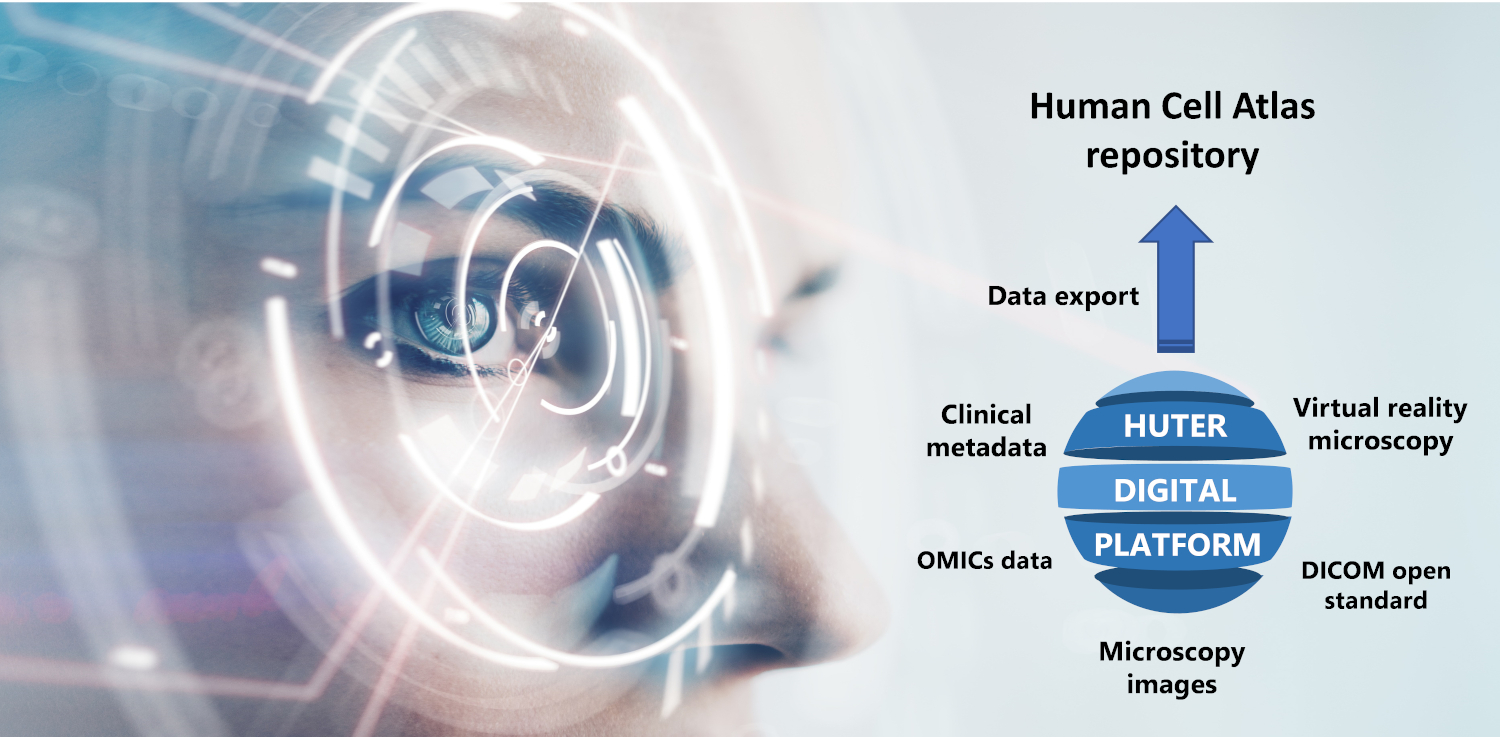May 10, 2021

Achieved the development of an advanced digital platform within the HUTER project
Date: May 10th 2021
The Human Uterus Cell Atlas project (HUTER) is focused on creating the cellular reference map of the human uterus.
HUTER partners have succeeded in the development of an advanced digital platform which will help researchers in the process and analysis of omics data. Concretely, the platform will gather huge amount of information, performing high throughput analysis over cell sequencing, clinical and experimental data and metadata. HUTER Platform also encourages tools for sharing and visualizing advanced microscopy images, transforming format closed imaging files into DICOM open medical standard format as well as Virtual Reality functionalities for training and educational purposes.
About the Human Uterus Cells Atlas – HUTER
The human uterus is a flagship reproductive organ with profound implications not only in reproduction but also in women ́s health. HUTER can advance the Human Cell Atlas initiative for the exploitation potential in Obstetrics and Gynecology and biomedicine research areas such as Regenerative Medicine or Reproductive Medicine.
The uterus is itself a model for regenerative medicine since (i) endometrial tissue regenerates monthly and its transformation is executed through dynamic changes in states and interactions of multiple cell types, and (ii) myometrial tissue has remarkable regenerative capacity and extensive remodelling throughout pregnancy. Hence, the primary motivation HUTER proposal stems from the need to better understand the human uterus in order to more effectively address uterine diseases that impact women ́s health such as myomas or endometriosis and/or might contribute to infertility, infant and maternal mortality and morbidity.
HUTER technological and biological platform will be a crucial resource for the scientific and clinical communities to define the cellular basis of health and disease, allowing the rapid development of new diagnosis and prognosis tools and therapeutic advancements in the field.
Link to the project website here

